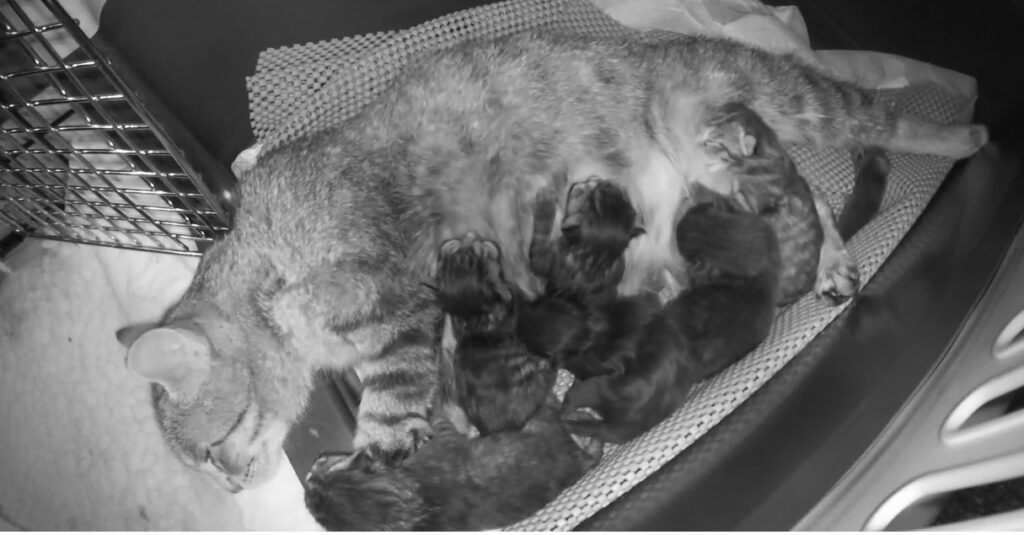Day 4
Mitsy seems to have found a rhythm and we see her and the babies spend a lot of time in the Nest. This is better than having them wander around in the crate and running the risk of getting lost. At 4:30 pm there is a bit of a scare because I hear Mitsy cough a couple of times. I go down into the basement and find it quite cool again. Today, earlier I opened the side window and switched off the heater because it was pretty nice outside. We also ran the AC though, and that chills the downstairs area because there is a leaky vent right over the crate. I have switched the heater back on and tried to block that vent. Window was closed before we went for a bike ride around 1 pm. We were back home before 2 pm.

Will keep an eye on that coughing, which she is now doing again 10 minutes later. It might be a hair ball of course, or from the pee and poop she is eating from the babies. A bit disconcerting. Maybe add some lysine later today when I add food? We give it to our resident cat, to boost her immune system.
Mitsy seems do be doing well, feeding 4 and 2 kittens alternately. Wim thinks we should name the two trouble makers (one big black and one big tabby, possibly males), Statler and Waldorf (Steady and Wallie) because they complain loudly all the time. He says It makes him think of the Muppets, where Steadler and Waldorf were the two old guys in the side seats commenting on everything… 🙂

We are TNR certified!
Today we did the TNR course by Community Cats Toronto (CCT). And we passed the exam! Yay! We are certified! (As we were not before, wink wink 🙂 )
TNR stands for Trap Neuter Return/Release. This particular course is aimed at anyone who would like to get involved in the feral cat issue and help with trapping, neutering and releasing cats that cannot be socialised in a safe environment with a guaranteed food source, after they have been spayed (sterilised/castrated).
In general, in the inner city and suburbs of Toronto, this comes down to helping to feed colonies where multiple cats live. This can be a spontaneous gathering of cats in a deserted building, or it can be in and around a dedicated space with volunteers to help manage it.
Colony animals and strays can be born outdoors without any human intervention and are then usually labeled ‘ferals’. Or they might be initially born with and/or adopted by people, but got lost, were ‘let go’ or simply chose to leave their people and live ‘independently’. If these animals were not neutered, chances are they will produce at least 3 litters of kittens in one year; the average litter size is 4 kittens, so do the math to know how quickly the numbers rise… A lot of kittens that are born in the outdoors will not survive for long. And if they do, they are exposed to human dangers such as traffic, poison, abuse and other reprehensible interventions. Alternatively, they can fall prey to local wildlife, such as coyotes or raccoons. The outside world is in general not a safe one.
If you’d like to hear about upcoming courses and other Community Cats and Coalition news and events, please subscribe to the CCT Newsletter.